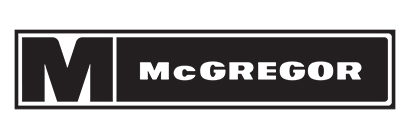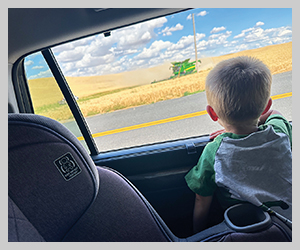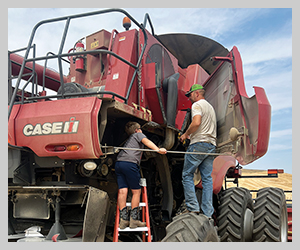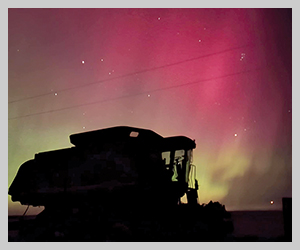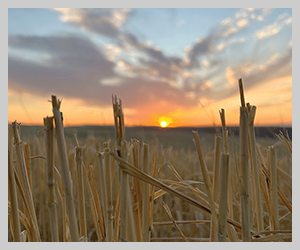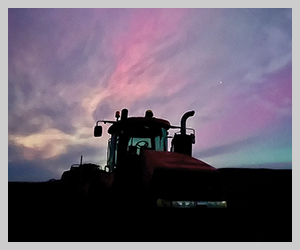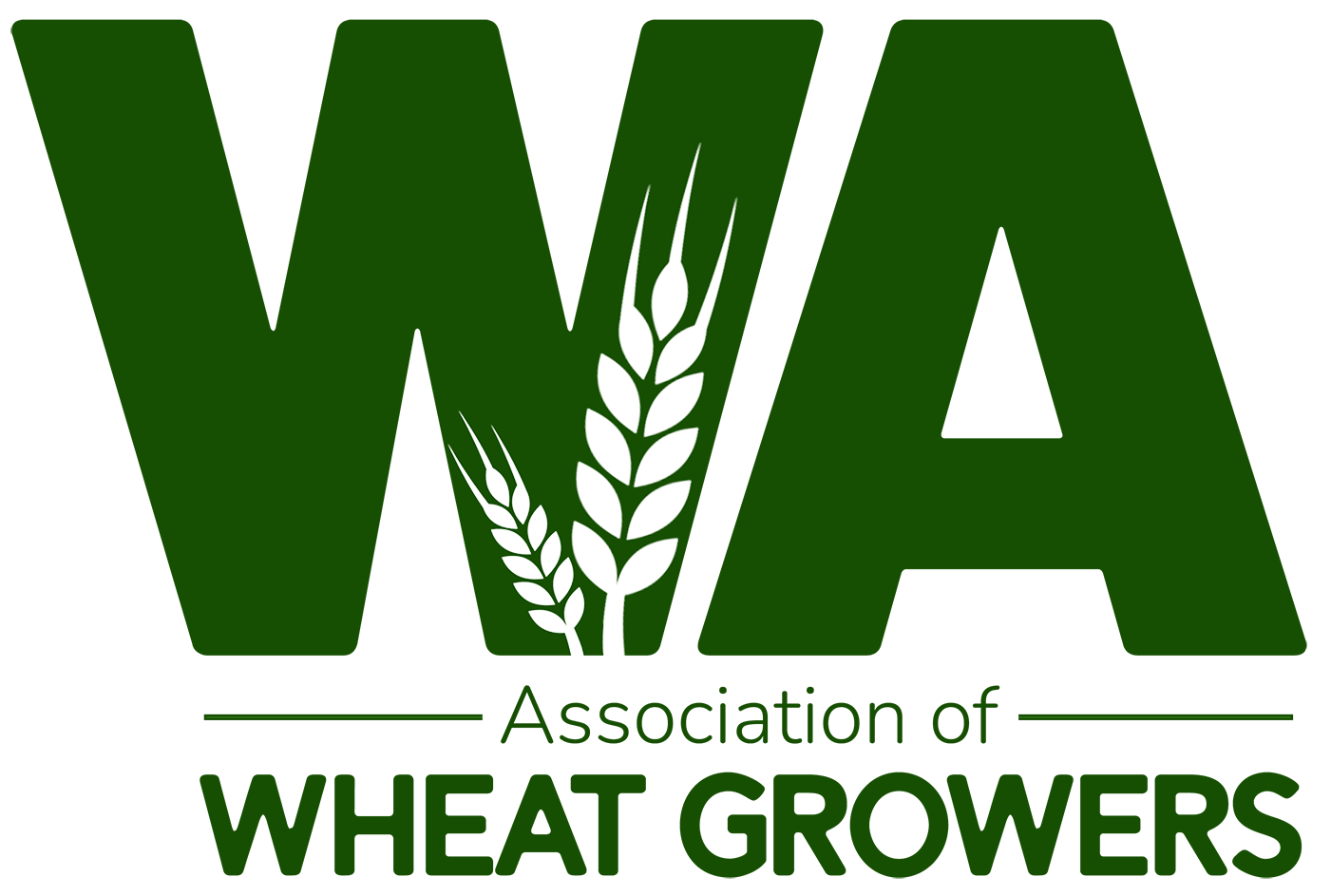Breaking out the breakout sessions Marketing, renewable energy grants, and conservation updates
2024December 2024
By Wheat Life staff
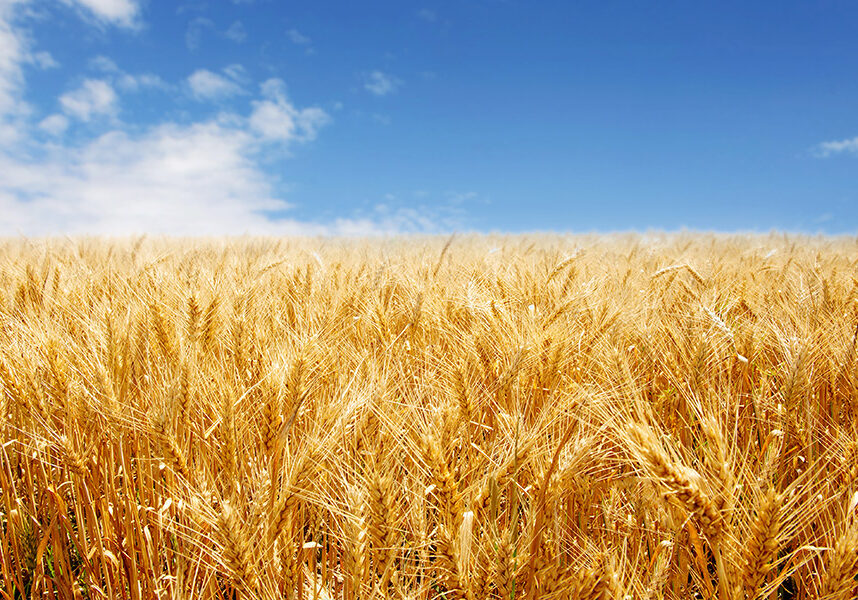
The breakout sessions at the 2024 Tri-State Grain Growers Convention ran the gamut from advice for successful lobbying to a global wheat market outlook to thinking critically about barley’s future. Here’s a recap of some of those sessions.
Soft white projected to lead rise in U.S. exports

The “Global Wheat Trade and Marketing” session provided an overview of current wheat market dynamics, geopolitical influences, and future opportunities. Luke Muller, assistant director of the U.S. Wheat Associates (USW) West Coast Office in Portland, Ore., discussed how global events, such as the Black Sea conflict, have impacted wheat prices. Despite a 10 million metric ton (mmt) drop in Russian production, aggressive exports continue, aided by high interest rates incentivizing sales. Ukrainian production is down, with ending stocks sustaining exports. Black Sea ending stocks are 38% lower over the last three years. Meanwhile, production in Australia, Canada, and Argentina is projected up.
Domestically, wheat acreage remains stable despite competition from corn and soybeans. Improved U.S. moisture profiles are a positive for growers, though a strong dollar and rising storage costs weigh on competitiveness. Hedge funds show less bearish activity than last year, signaling potential for price movement. On the demand side, global import trends are rising, though Turkey has banned wheat imports, and India’s import policies remain uncertain. World ending stocks for major exporters have fallen 28% since 2017-18.
Mike Spier, USW vice president of overseas operations, highlighted a 20% rise in U.S. wheat exports this year, with soft white wheat (SW) leading the way. SW exports are up nearly 50% year over year, with key markets like the Philippines, Japan, and South Korea showing substantial growth. USW’s partnership with UFM Baking and Cooking School in Bangkok, Thailand, has further boosted SW demand over the last 10 years.
Vince Peterson, USW president, reported a projected 50% increase in global wheat trade by 2050. While logistics pose challenges, the U.S. is positioned to grow exports to 70-75 mmt if the world production projection holds, leveraging strong market development and a global network of USW staff offices to maximize producer income and expand market opportunities.
Finding the ZEN in renewable energy grants
Next year, the U.S. Department of Agriculture has millions of dollars to give away through its Rural Energy for America Program (REAP), and David Funk, president of Zero Emissions Northwest, wants to help Pacific Northwest growers get their share.

REAP provides grant funding to eligible agricultural producers and rural small businesses for renewable energy systems or to make energy efficiency improvements. Funds are available for renewable energy projects, such as solar, geothermal, or wind, and energy efficiency grants, which could include HVAC systems, drones, new windows, or new machinery. Zero Emissions Northwest assesses and qualifies the project, handles all the paperwork, and submits the grant application on the producer’s behalf. They are an official technical assistance contractor for REAP.
Producers will need to provide Funk’s company with the appropriate material, such as utility bills or fuel bills, register in sam.gov, and connect Zero Emissions Northwest with the entity that will be building or installing the project.
“Our job is to win the most money, with the highest certainty, in the shortest amount of time for you,” Funk explained. “We look at how you are scoring and figure out which grants are the best match for you.”
Grants can be up to 50% of the project’s cost, and there may be federal tax credits available. The reimbursable grants are usually awarded three months after the application has been submitted. As of October 2024, Zero Emissions Northwest has helped Washington producers win 44 grants for nearly $2 million. The company just launched a group-purchasing plan for solar for Washington and North Idaho producers. Funk estimates that will reduce the cost of solar by approximately 30% compared to a farmer buying a system alone.

NRCS state updates
The Natural Resources Conservation Services (NRCS) Update was provided by Washington’s Roylene Comes at Night, Idaho’s Lori Kassib, and Oregon’s Greg Becker.
Washington’s team utilized 94% of Conservation Stewardship Program (CSP) funds available, which included all approved applications. The new 809 Conservation Harvest Management interim practice has been announced in Washington, and details will be available soon. Comes At Night announced that CSP is being revamped at the national level based on survey results, and the goal is to have staff better educated on the program to better serve growers.
In FY 2024, Washington wheat growers submitted 126 applications totaling 119,846.50 application acres. Seventy-five contracts were obligated for a total of $20,690,498.81 and 104,948.90 contracted acres. Statewide total FY 2024 allocations for Washington, including both farm bill and Inflation Reduction Act (IRA) funding, totaled $47,607,132 in funds; $22,494,000 in CSP funds; and $1,235,287 in Agricultural Conservation Easement Program funds. FY 2025 funding includes $29,218,986 in Environmental Quality Incentives Program (EQIP)-farm bill; $21,165,616 in EQIP-IRA; $11,830,000 in CSP-farm bill; and $15,654,000 in CSP-IRA. Initial allocations include a 31% increase in total technical and financial assistance funding due to the IRA. There is a 21% decrease in EQIP-farm bill funding and a 14% decrease in CSP-farm bill funding.
Kassib has been filling in as Idaho’s state conservationist for over a year now, and the state has had great success as a big water team with pipeline and canal projects. EQIP contracts were obligated for just over $65.6 million. This was the biggest year that Idaho NRCS has ever had. One hundred eleven CSP contracts totaling $15,345,635 were obligated. In fiscal year 2024, $13,662,257 was obligated through five ACEP-agricultural land easements. There are several new practices and enhancements for FY 2025 that the team is very excited about. New practices and enhancements include 204-Adaptive Management for Soil Health; 397-Aquaculture Pond; 447-Irrigation and Drainage Tailwater Recovery; 555-Rock Wall Terrace; 570-Stormwater Runoff Control; 589-Cross Wind Trap Strips; 609-Surface Roughening; 610-Salinity and Sodic Soil Management; 633-Waste Recycling; 910-Annual Forages and Grazing Systems; and 812-Raised Beds.
Oregon FY 2024 obligations for CSP included $16.8 million in general CSP and $11.7 million in CSP-IRA. EQIP obligations included $31.8 million in general EQIP and $20.1 million EQIP-IRA. Conservation Implementation Strategy project areas include on-farm irrigation and energy efficiency in Deschutes County; unit soil health and sustainability in Jefferson County; irrigation water conservation and drought resilience in Klamath County; soil health management planning and implementation in Morrow and Umatilla counties; and preservation of no-till in Morrow County. EQIP-IRA funding practices for cropland and energy included 329-Residue Management (no-till); 345-Residue Management (reduced till); 590-Nutrient Management; 340-Cover Crop, and many other climate smart practices. There has been no slowdown yet in hiring with the new administration.
Grain marketing 101: Building skills for risk management
The “Benchmarking Your Merchandising and Future Risk Management Skills” session offered insights into grain marketing and risk management tailored for wheat and barley growers. Presented by Mike Rohlfsen and Jeff Kazin of AgrisAcademy LLC, the session highlighted key principles growers can adopt to improve their operations’ financial stability and marketing strategies.
Understanding and managing risk in grain marketing can lead to more informed decision-making and better outcomes. Rohlfsen and Kazin emphasized that many myths surrounding commodity merchandising persist in agriculture. They encouraged growers to think like their buyers and use professional tools and strategies to gain clarity and understanding of their farm’s market position.

A significant takeaway was the idea that futures markets, while not predictable, remain the best source of price information due to their efficiency and the collective knowledge they represent. Growers were urged to treat futures as a tool for risk management rather than speculation. This shift, though challenging, can significantly enhance marketing results.
The session also covered the importance of benchmarking, including farmers understanding market risks, defining their specific risk profile, and measuring their farm’s position accurately. Inaccurate estimates of yields, costs, and contracts often hinder farm operations, but a clear, measured approach can improve both risk management and operational efficiency.
Practical steps for growers included developing spreadsheets to track costs, exploring new market outlets, and learning more about the finer points of merchandising. The presenters stressed the importance of building long-term knowledge that can transform marketing practices into a permanent asset for the farm.
The session also underscored the importance of understanding merchandising terminology to build credibility with grain buyers. Speaking the same language as the professionals purchasing farmers’ crops not only demonstrates knowledge but also positions the farmer as a serious player in the marketplace. This fluency can foster trust and pave the way for stronger business relationships. Rohlfsen and Kazin highlighted that building and maintaining these relationships is essential for long-term farm success.
Buyers value consistency, transparency, and professionalism, and growers who approach their marketing with these traits in mind are more likely to secure better opportunities. Avoiding burned bridges and cultivating a network of trusted buyers can open doors to more competitive markets and better terms over time.


